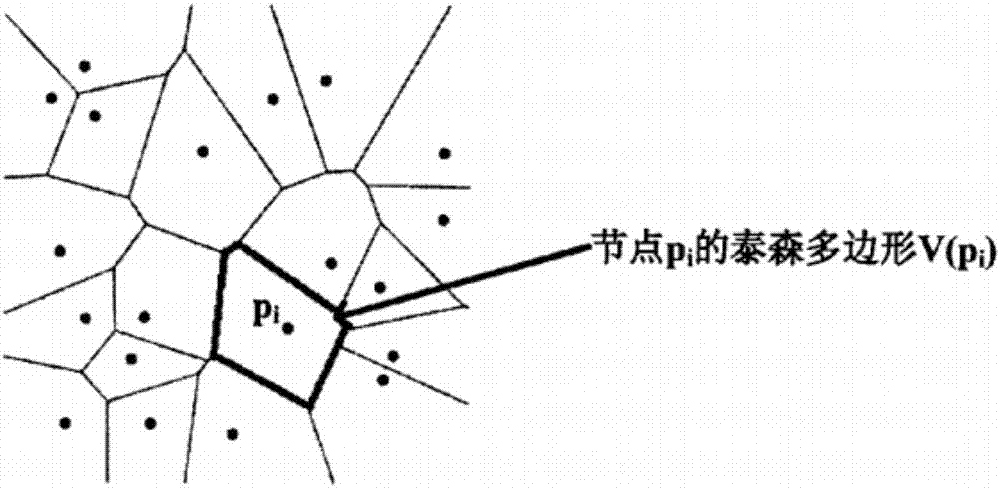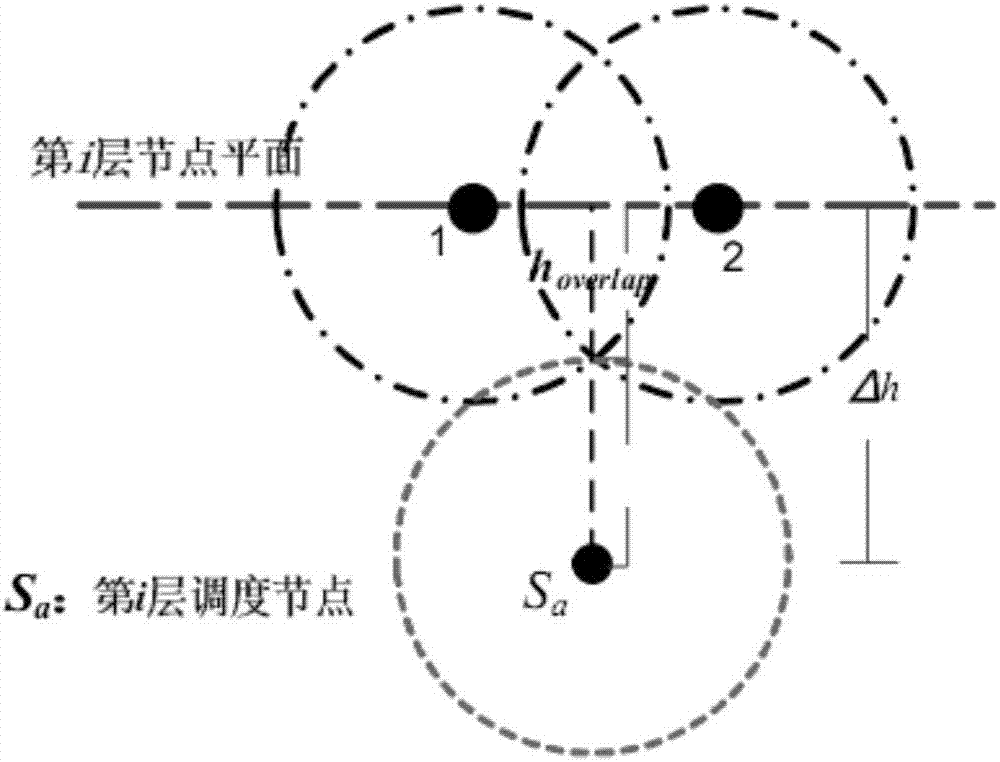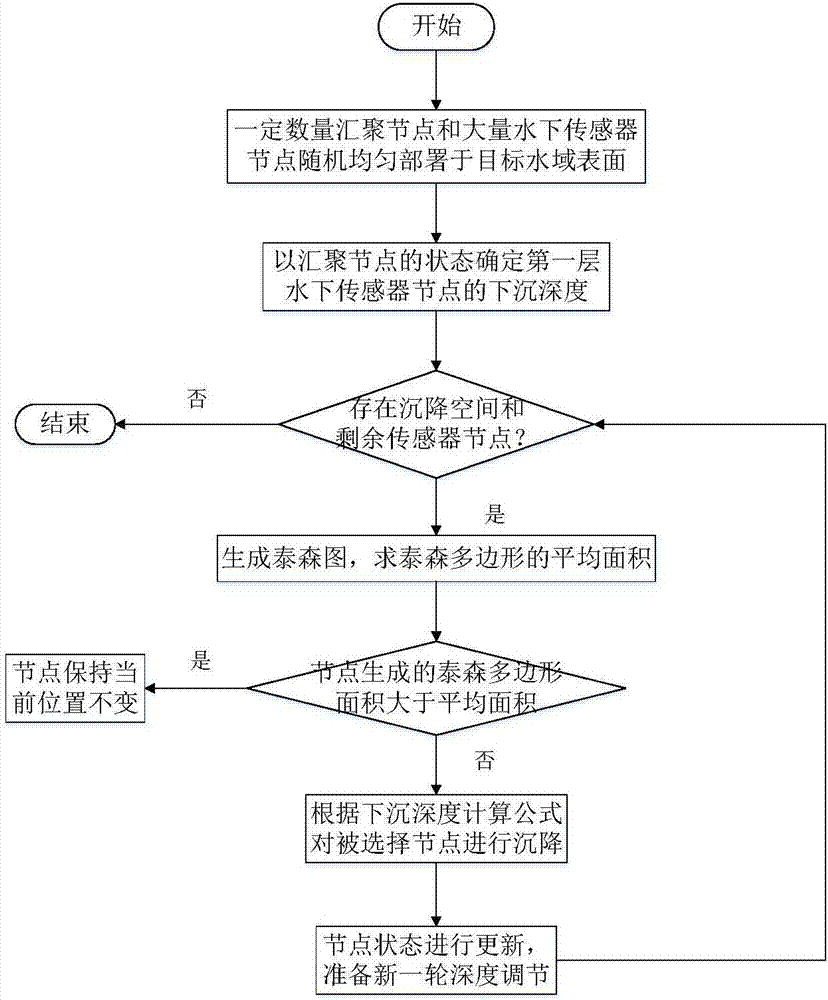Effective sensor node deployment method based on layering
A sensor node and node technology, applied in transmission systems, network planning, electrical components, etc., can solve the problems of not taking into account the time cost of deployment, node energy loss, the inability to guarantee the best overall effect, and poor practicability.
- Summary
- Abstract
- Description
- Claims
- Application Information
AI Technical Summary
Problems solved by technology
Method used
Image
Examples
Embodiment Construction
[0017] The present invention proposes a layer-based effective sensor node deployment method: mainly using Thiessen polygons to realize the layering of nodes, such as figure 1 shown, where V(p i ) is node p i All Thiessen polygons constitute a Thiessen graph; when the average area of Thiessen polygons is used to obtain the settlement nodes, the effect of layer spacing and node coverage is as follows: figure 2 shown, where h overlap Indicates the vertical distance from the point where the sensing ranges of two nodes intersect in the same layer to the layer, Δh is the distance between the sensor nodes of the two layers, and r is the sensing radius of the node; repeat the previous two processes until the settlement-free space is completed Deployment works.
[0018] The main steps are as follows:
[0019] 1. In the initial stage, a certain density of aggregation nodes is placed on the surface of the target water area as an intermediary for data communication between the sens...
PUM
 Login to View More
Login to View More Abstract
Description
Claims
Application Information
 Login to View More
Login to View More - R&D Engineer
- R&D Manager
- IP Professional
- Industry Leading Data Capabilities
- Powerful AI technology
- Patent DNA Extraction
Browse by: Latest US Patents, China's latest patents, Technical Efficacy Thesaurus, Application Domain, Technology Topic, Popular Technical Reports.
© 2024 PatSnap. All rights reserved.Legal|Privacy policy|Modern Slavery Act Transparency Statement|Sitemap|About US| Contact US: help@patsnap.com










